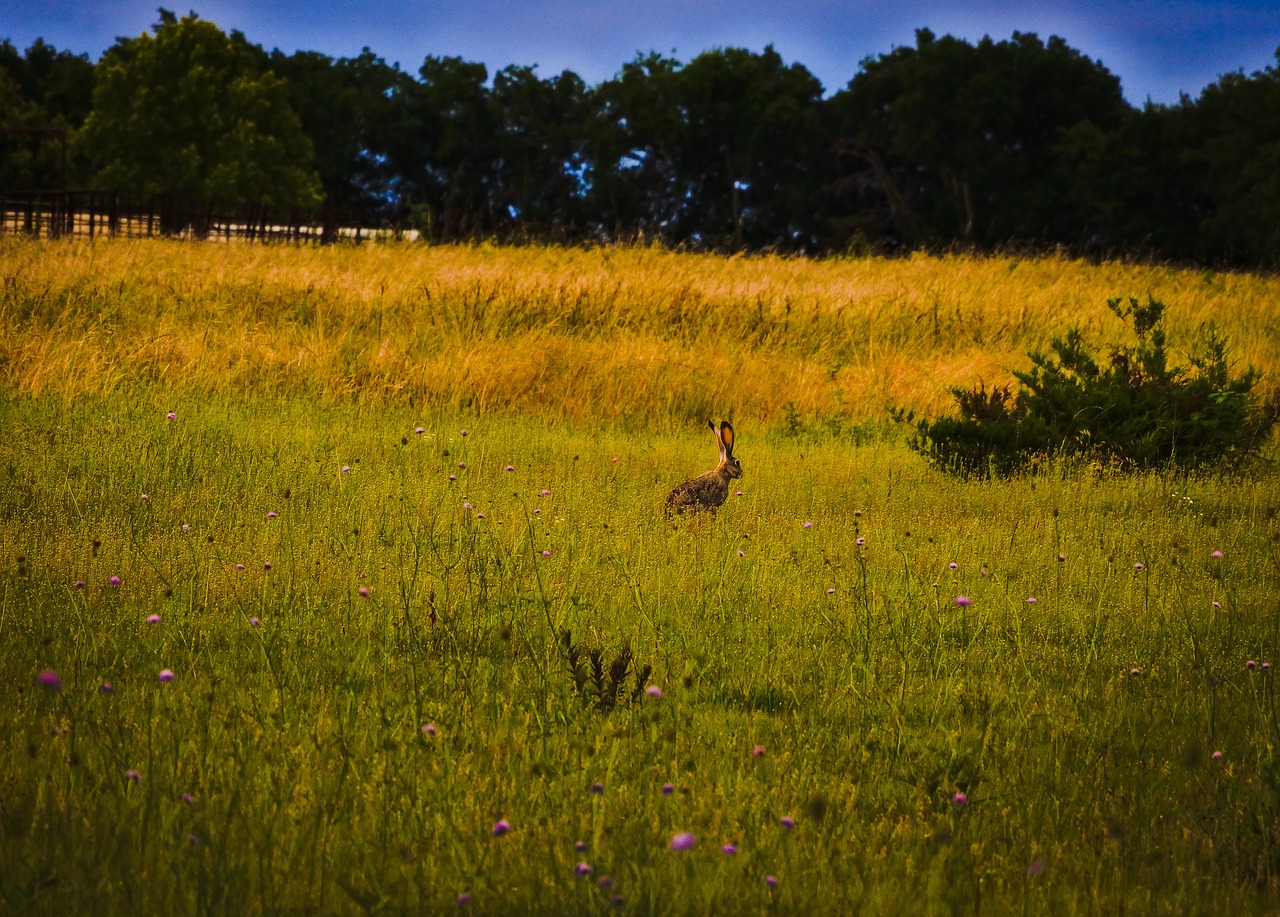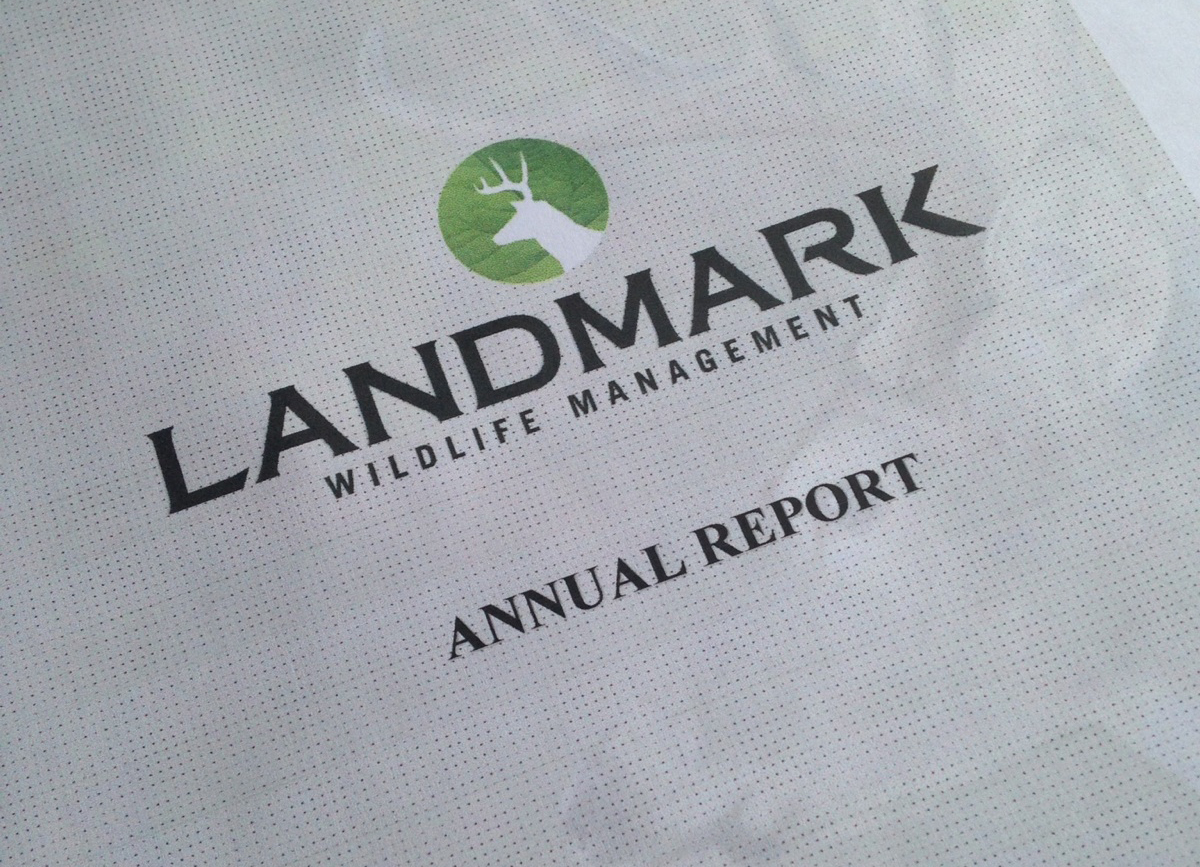“We have an animal here whose surname is the ‘jackass rabbit’ It is three feet long, has legs like a counting-house stool, ears of monstrous length, and no tail to speak of. It is swifter than a greyhound, and as meek and harmless as an infant. I might mention, also, that it is as handsome as most infants: however, it would be foreign to the subject, and I do not know that a remark of that kind would be popular in all circles.”
– Mark Twain
Fun fact: jackrabbits are not rabbits—they’re hares. What’s the difference and what’s up with the name? As described by National Geographic: “Hares are larger than rabbits, and they typically have taller hind legs and longer ears. Jackrabbits were named for their ears, which initially caused some people to refer to them as ‘jackass rabbits.’ The writer Mark Twain brought this name to fame by using it in his book of western adventure, Roughing It. The name was later shortened to jackrabbit.”
The black-tailed jackrabbit, found in Texas, is also known as the American desert hare. They may be seen more often than some of their other hippity hop friends because they use the high visibility of pastures to spot predators before predators spot them and rely on their speed to escape. (Texas Parks & Wildlife). Their considerable ears help keep them cool in the blistering Texas heat thanks to “an expansive surface area of exposed skin loaded with blood vessels.” As further described by AskNature.org: “When the surrounding air temperature is slightly below the rabbit’s body temperature, as when it retreats from hot desert sun into shade, the blood vessels in the outer part of its ears widen in a process called vasodilation. This results in greater circulation of warm blood from the body’s core to the jackrabbit’s ears, where heat is lost to the cooler surrounding air.”
While jackrabbits can live up to eight years in the wild, they are a regularly hunted prey of hawks, coyotes, and badgers. They can reach a speed of 40 mph but it’s no safe escape guarantee. A friend of Landmark’s watched helplessly as her laser-focused cattle dog mix successfully chased down a jackrabbit in a field (and then dutifully delivered the carcass to her).
Jackrabbits take advantage of the cover of darkness for safer foraging, looking for abundant greens in the spring and summer (clover, alfalfa) and more woody, dried vegetation during fall and winter. They mate year-round with females giving birth to one to four litters a year, each with one to eight young called leverets or bunnies. Jackrabbits “are born bright-eyed and active, and after only one month they can fend for themselves.” (Texas Parks & Wildlife). Indeed, it is the “condition of their young at birth” that plays a role in distinguishing hares from rabbits. One of the key differences is the type of nests they build. Because jackrabbits are born fully furred and ready to hit the ground hopping, jackrabbit mothers typically don’t build a nest, rather, “a shallow depression in the ground or vegetation is adequate.” (Texas Parks & Wildlife). Cottontails, by contrast, with a gestation period of just under a month, are born naked, blind, and mother-dependent. Texas Parks & Wildlife reports that “less than half of the young will survive to leave the nest and many others will be eliminated before reaching maturity (but) their 85-percent mortality rate is offset by their reproduction potential.”
There are three wild rabbits native to Texas, the swamp rabbit, the desert cottontail, and the most common, the Eastern cottontail. The swamp rabbit (a large cottontail) and desert cottontail are not trying to trick you with their names, those are the areas of Texas they prefer. The Eastern cottontail, however, is a bit more relaxed about its geography than its name implies. Eastern cottontails are found throughout much of Eastern and Central Texas, if not most of the state. In contrast to jackrabbits, their ears are quite small. Pair that sweet little-eared look with big brown eyes and a puff of cotton for a tail on a two-pound body, and it’s no wonder they’re an adored character in book, film, and song. But being cute and popular doesn’t save them from being a favored prey of, oh, just about everything. Cottontails have a life expectancy of about one to three years.
In an effort to stay on the long side of that life expectancy range, cottontails typically feed on their preferred vegetation at night and take advantage of their ability to jump over two feet high—some say as high as four feet—and leap distances of ten (or more) feet. As described by Sciencing: “Cottontail rabbits possess sharp senses of hearing, eyesight and smell. This aids in their protection from predators. A cottontail bunny normally moves about in hops, but if frightened, it will either freeze in place or run as fast as 18 miles per hour to try to escape predators. Cottontail rabbits may use an evasive zig-zag pattern as they run. Cottontail rabbits communicate by thumping their hind feet on the ground, making various vocalizations and screaming at a high pitch if captured.”
In 2012, Landmark’s own Keith Olenick was interviewed by Lone Star News Outdoor News about wildlife exemptions at which time he noted, “smaller properties have obtained plans for dove, rabbits, squirrels, songbirds, even butterflies.” As with all successful wildlife management, managing for rabbits comes down to fostering a suitable habitat. The Bexar County Appraisal District has an online resource from Texas Parks & Wildlife that includes a “Wildscapes Plant List” which identifies what values plants have for wildlife, including rabbits. For example, rabbits eat the berries of yaupon and browse on the foliage of Texas ash. You can find the Wildlife Management and Activities Practices downloadable PDF with the plant list (that starts on page 229) here. For more rabbit management tips, Game & Fish magazine has an article on “Rabbits: How to Manage Your Land for More Cottontails.” The article includes tips on escape cover and the “need” for predator control:
“If good escape cover is present, cottontails hold their own quite nicely, even when predators are abundant. In other words, by providing effective escape cover, you can control the effectiveness of predators, and that is all the predator control you’ll need. Two or three brush piles placed in strategic locations will help your rabbit population more than all the predator control measures you could ever hope to use.”









